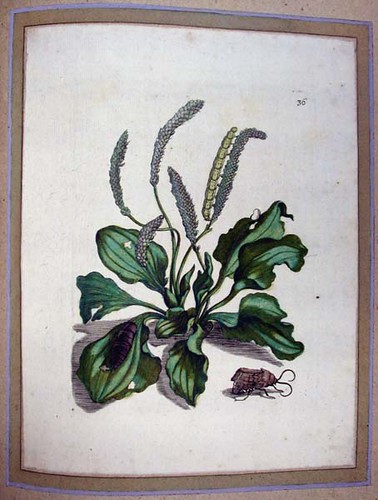Maria Sibilla Merian: Der Raupen wunderbare Verwandelung
Nuremberg: 1679
Sp Coll Euing d3-b.19
Maria Sibilla Merian (1647-1717) was the daughter of Matthäus Merian the Elder, a Swiss engraver of some note; her maternal grandfather was the Dutch botanical engraver Johann Theodor de Bry, and she was taught to paint by her stepfather, Jacob Marrel, another artist who specialized in traditional Dutch flower compositions. A self taught naturalist, she was a pioneering entomologist and great botanical artist.
Although Maria may now be primarily known as a botanical artist, her chief interest actually lay in moths and butterflies and their metamorphoses: as plants provided their nourishment, she recorded both the insects and their hosts with equal care. She was particularly fascinated by tropical insects, but this - her first book - is confined to European species. Its engravings depict caterpillars feeding on plants in flower or fruit. This is a copy of the first part only, published in 1679 and containing fifty engraved plates; it lacks the accompanying descriptive text.
At the age of 52, Maria embarked on an extraordinary expedition to Surinam (Dutch Guiana) with her two daughters; they spent two years collecting and painting insects and the plants on which they lived, successfully recording the exotic colours of tropical flowers and insects at a time when they were almost entirely unknown to Europeans. The resulting publication, Metamorphosis insectorum Surinamensium (1705) brought Maria lasting fame.
Previous page ; next page





